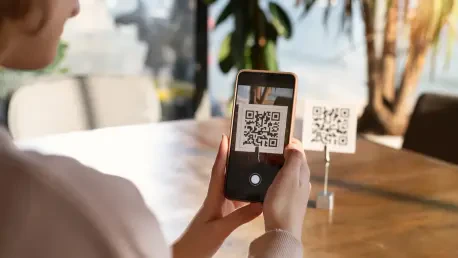As society becomes increasingly reliant on technology, QR codes have swiftly embedded themselves into everyday life, bringing both convenience and growing trepidations. Could a simple scan of a QR code unravel your digital security?
The Hidden Threat Behind QR Codes
The Anti-Phishing Working Group (APWG) recently reported a shift in cybercriminal tactics, with an increased focus on QR codes for phishing scams. During a detailed analysis of online criminal activity involving identity theft, researchers unearthed a worrying trend: hackers are embedding QR codes in emails to lure recipients toward fraudulent web pages. With an estimated 1.7 million malicious QR codes identified by Mimecast, an alarming picture of this silent cybercrime emerges.
QR codes, once mere industry conveniences in sectors like retail and manufacturing, have now opened new gateways for cyber threats. Companies use these codes to streamline services, offer promotions, and enhance communication. However, this new digital avenue has attracted a host of cyber predators aiming to exploit their unsuspecting victims. The stark increase in phishing activities highlights the urgency to address this rapidly evolving security concern.
Anatomy of a Digital Deception
The methodology behind QR code cybercrimes is both sophisticated and deceptive. Criminals utilize the same generators as legitimate businesses, embedding malicious URLs capable of shortening links and dynamically changing destinations. These tactics confound traditional email filters, significantly enhancing user vulnerability. Notably, “quishing” — the practice of QR code phishing — has seen major entities like Mastercard as preferred targets.
The advent of free QR code generators exacerbates the problem, as these services fall short in implementing stringent anti-fraud measures, offering fertile ground for malicious activities. This dual-use technology becomes a weapon in the wrong hands, camouflaging malevolent intentions under a banner of business legitimacy.
Insights from Cybersecurity Experts
Experts from APWG and Mimecast warn of a surge in phishing attempts involving QR codes, reporting hundreds of millions of incidents. Such overwhelming numbers reinforce cybercriminals’ evolving tactics and the pressing need for vigilance. Cybersecurity specialists emphasize the dual-use potential of QR technology, advocating for proactive measures to curb its misuse.
A notable example includes one retail company that successfully implemented enhanced QR code monitoring systems, resulting in a substantive decline in cyber incidents. This case underscores the effectiveness of modified strategies and advanced security tools in combating QR-based threats.
Safeguarding Against QR Code Risks
Protecting oneself and organizations from QR code threats requires a multi-pronged approach. First, verifying the legitimacy of QR codes before interaction is essential. Expert recommendations include exercising digital caution and utilizing technology capable of detecting malicious QR activity swiftly and effectively.
Employee training is another critical element in bolstering cybersecurity defenses. Educating staff on QR code risks and encouraging skepticism toward unsolicited emails can significantly reduce vulnerability. Organizations that invest in comprehensive cybersecurity protocols fortify their digital landscapes, remaining resilient in the face of evolving threats.
Looking Forward: Strengthening Digital Fortresses Against QR Threats
As QR codes continue shaping digital interactions, the threat landscape has transformed, demanding heightened vigilance and adaptation. Encouraging comprehensive awareness and deploying innovative solutions were vital steps taken to reinforce digital fortresses against potential cybercriminal exploits. Organizations collaborated with industry experts to refine strategies tailored to tackling QR code-related risks. This proactive approach underscored the necessity of maintaining a vigilant stance against digital vulnerabilities to ensure robust security measures protected evolving landscapes.
Effective countermeasures, in collaboration with industry experts, marked a turning point in the battle against QR code cybercrime. These efforts not only curtailed malicious activities but also restored trust in QR technology. Remaining a step ahead of cybercriminals through constant vigilance and innovative strategies proved essential in safeguarding against future risks, securing digital environments against a rapidly shifting cyber threat landscape.









